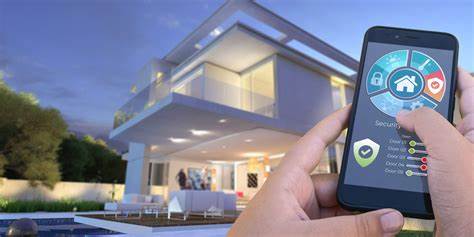
The Psychology of Smart Home Design
Introduction
Smart home technology has become increasingly popular in recent years, revolutionizing the way we interact with our living spaces. The psychology behind smart home design plays a crucial role in creating a harmonious and user-friendly environment. In this article, we will explore the historical background, key concepts, and main discussion points of smart home design psychology, as well as provide case studies, discuss current trends, address challenges, and speculate on the future outlook.
Historical Background
Smart home technology has come a long way since its inception. From early automated systems that controlled basic functions like lighting and temperature, to the advanced and integrated systems available today, the evolution of smart home technology has greatly influenced its design psychology. Factors such as advancements in computing power, the rise of the internet of things (IoT), and the increasing demand for convenience and efficiency have all shaped the psychology of smart home design.
Key Concepts and Definitions
To understand smart home design psychology, it is important to define some key concepts. The term “smart home” refers to a living space equipped with various devices and systems that can be remotely controlled and automated. This concept has significant implications for design psychology, as it requires a deep understanding of user experience (UX). UX in smart home design refers to the overall experience and satisfaction that users derive from interacting with their smart home systems. It involves creating intuitive interfaces and ensuring seamless integration of various devices.
Ambient intelligence is another important concept in smart home design psychology. It refers to the ability of a smart home system to adapt and respond to the needs and preferences of its occupants by intelligently sensing and interpreting their behavior. Personalization is also a key concept, emphasizing the importance of tailoring smart home systems to meet the unique needs and preferences of individuals. Human-machine interaction, the interaction between humans and smart home devices, is another crucial aspect of design psychology, as it shapes the overall user experience.
Main Discussion Points
Color and lighting play a significant role in smart home design psychology. Different colors have psychological effects on mood and emotions. For example, warm colors like red and orange can evoke feelings of passion and energy, while cool colors like blue and green can create a sense of calmness and relaxation. Lighting design is equally important, as it can be tailored to create specific psychological effects, such as bright and energizing lighting for productivity or soft and warm lighting for relaxation.
Spatial layout and organization also have a profound impact on human cognition and behavior in smart home design. Different spatial arrangements can affect how individuals navigate and interact with their living spaces. Principles of spatial organization, such as minimizing clutter and optimizing flow, are essential for creating an optimal user experience in smart homes.
Sound and acoustics are often overlooked aspects of smart home design psychology. Different sounds and acoustics can have psychological effects on mood and well-being. For example, soothing music or nature sounds can promote relaxation, while loud noises can cause stress or discomfort. Sound design plays a crucial role in creating a pleasant and psychologically stimulating environment.
Privacy and security are important considerations in smart home design psychology. Privacy concerns can have a psychological impact on individuals, as they may feel uncomfortable being constantly monitored or having their personal information at risk. Ensuring security and privacy in smart home design is crucial to address psychological needs and foster a sense of trust and comfort.
Case Studies or Examples
Real-world examples of smart homes that have successfully employed psychological design principles can provide valuable insights. These examples demonstrate how smart home technology can enhance the overall user experience and improve well-being. By analyzing the psychological effects and user experiences of individuals living in these smart homes, we can gain a deeper understanding of the impact of smart home design psychology on everyday life.
Current Trends or Developments
Research on smart home design psychology is an evolving field. Recent findings shed light on the psychological aspects of smart home technology and provide valuable insights for designers. Emerging trends, such as the use of artificial intelligence and machine learning algorithms to better understand user preferences and adapt to their needs, are shaping the future of smart home design psychology.
Challenges or Controversies
Smart home design psychology is not without its challenges and controversies. Some individuals may have concerns about the privacy and security implications of having a fully automated living space. Debates within the field focus on striking a balance between convenience and privacy, as well as addressing ethical considerations.
Future Outlook
As smart home technology continues to advance, smart home design psychology will play an increasingly significant role. The future implications and directions for this field are promising. Advancements in technology, such as the integration of virtual reality and augmented reality, will further enhance the user experience and provide new opportunities for psychological design interventions.
Conclusion
Understanding the psychology of smart home design is crucial for creating user-friendly and harmonious living spaces. By considering factors such as color and lighting, spatial layout and organization, sound and acoustics, privacy and security, designers can create smart homes that cater to the psychological needs and preferences of individuals. The future of smart home design psychology holds great potential for further advancements and innovations in creating intuitive and personalized living environments.